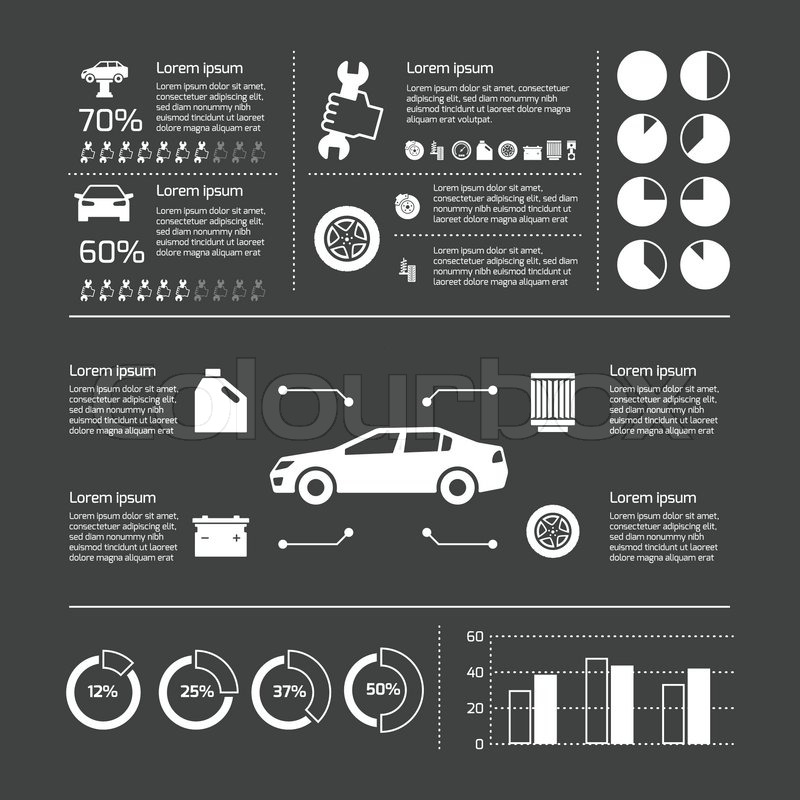Analyzing Your Car'S Warning Indicators: What They Really Communicate
Analyzing Your Car'S Warning Indicators: What They Really Communicate
Blog Article
Short Article By-Lauritsen Gilbert
When you're behind the wheel, those beautiful caution lights on your dashboard can be a bit difficult. Do you recognize what they're attempting to tell you concerning your car's wellness? Recognizing the importance of these lights is important for your security and the longevity of your car. So, the following time among those lights turns up, wouldn't you intend to analyze its message precisely and take the necessary steps to address it?
Common Caution Lights and Interpretations
Determine usual warning lights in your auto and understand their significances to ensure secure driving.
The most normal warning lights consist of the check engine light, which signals concerns with the engine or emissions system. If this light begins, it's important to have your vehicle inspected quickly.
The oil stress advising light indicates low oil pressure, needing instant attention to stop engine damage.
A flashing battery light might recommend a faulty billing system, potentially leaving you stranded otherwise resolved.
The tire pressure monitoring system (TPMS) light notifies you to low tire stress, affecting car security and gas efficiency. Overlooking this could cause hazardous driving problems.
The abdominal light shows a problem with the anti-lock stopping system, jeopardizing your ability to quit rapidly in emergency situations.
Last but not least, the coolant temperature level warning light warns of engine overheating, which can lead to severe damage if not settled swiftly.
Understanding these common caution lights will help you address issues promptly and preserve safe driving problems.
Relevance of Prompt Attention
Recognizing the typical warning lights in your automobile is only the initial step; the value of immediately attending to these cautions can't be highlighted enough to ensure your safety when driving.
When a caution light brightens on your dashboard, it's your vehicle's method of connecting a possible issue that needs focus. Ignoring these cautions can result in more severe problems in the future, compromising your security and possibly costing you much more out of commission.
Trigger attention to alerting lights can stop break downs and accidents. For example, a blinking check engine light can suggest a misfire that, if left unattended, might create damage to the catalytic converter. Addressing this without delay can conserve you from an expensive repair work.
Similarly, https://devinicxql.luwebs.com/31894473/your-complete-handbook-for-finding-credible-vehicle-repair-work-facilities-in-your-region cautioning light could signify low brake liquid or used brake pads, crucial parts for your safety and security when driving.
DIY Troubleshooting Tips
If you see a caution light on your dashboard, there are a couple of do it yourself repairing ideas you can try prior to looking for expert aid.
The primary step is to consult your cars and truck's manual to recognize what the particular caution light suggests. Often the issue can be as straightforward as a loose gas cap activating the check engine light. Tightening https://www.makeuseof.com/roadside-assistance-services-compared/ might deal with the problem.
One more usual problem is a low battery, which can trigger numerous warning lights. Checking the battery links for deterioration and ensuring they're secure might take care of the trouble.
If a caution light lingers, you can attempt resetting it by detaching the vehicle's battery for a couple of mins and then reconnecting it. Additionally, inspecting your car's fluid degrees, such as oil, coolant, and brake liquid, can assist repair warning lights related to these systems.
Verdict
Finally, recognizing your auto's warning lights is important for maintaining your automobile running efficiently and safely. By promptly addressing these informs and recognizing what they indicate, you can prevent pricey repair services and possible break downs.
Bear in mind to consult your cars and truck's guidebook for specific details on each cautioning light and take action as necessary to guarantee a trouble-free driving experience.
Remain notified, remain risk-free when traveling!
